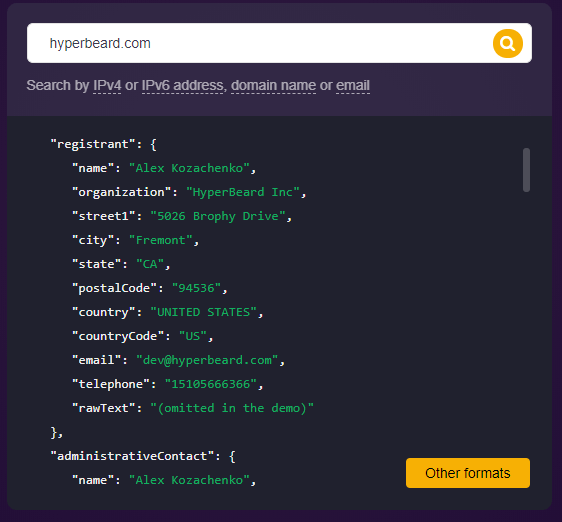4 App Development Challenges a WHOIS Data Lookup API Can Help Address

About 90% of the time people spend on their mobile devices is app use. And with almost half of the world’s 7.7 billion population using their phones and tablets every day, the app development market is indeed a financially rewarding sector. In fact, experts predict the overall market’s revenue to reach $407 billion by 2026.
But like any other booming market, the app development sector has several hurdles to overcome. What immediately comes to mind is the challenge of creating an app with minimal bugs and glitches. Then, there is also the issue of marketability. How do you make sure it gets downloaded and used by the people you created them for?
A WHOIS data lookup API may be able to help. We specifically explored four app development challenges where WHOIS API can make a difference.
Challenge #1: Coming Up with Lucrative App Ideas
Anyone can come up with an app idea, but the question is, would it sell? Or, in app development speak, would it have more downloads, sessions, and upgrades over uninstalls and unsubscriptions? What you think is great may not necessarily engage with your target market. It’s therefore crucial for an app idea not only to be great but lucrative, too.
One way to achieve this is by looking at what market leaders are doing. Visit Google Play or Apple’s App Store and look at the top-performing apps. You’ll see the apps with millions of downloads and high ratings. Each app’s About Page is likely to point you to its website and developer. If you feel that some information is missing, but you want to learn more, you can run the domain on a WHOIS data lookup API.
Here’s an example. We queried the WHOIS data lookup API for HyperBeard — an app developer on Google Play’s Top Charts. We used its domain hyperbeard[.]com as a search term.

You could find out the registrant’s name, which in this case, is probably the owner of the company, and from there, you can start researching what they are currently up to. You can glean lucrative app ideas since the developer you are studying is experienced in creating successful apps.
Challenge #2: Deciding on an App Name
When deciding on an app’s name, you are not only choosing a name for your mobile app, but ideally, also your domain name. Therefore, the rule of thumb is to make sure that the app has a unique and memorable name indeed. And although no one else on any app store may be using the name, that doesn’t mean that the exact name is also available as a domain. Making sure that the name isn’t trademarked can help too as it will let you avoid infringement accusations in the long term.
Hence take trouble to run the domain name on a WHOIS data lookup API to double-check availability. You will see who owns it (if it’s taken) and you can try to negotiate a deal with the current owner’s details.
Challenge #3: Warding Off Imitators
Another decision to make is whether to go for a .com, .net, or .app domain. Which top-level domain (TLD) is best for it? A good practice, though, is to register the same domain name in various TLD possible as a way to fight off cybersquatting since cybercriminals may use look-alike domains in phishing attempts targeting your app’s users.
If you already registered yourapp[.]com, for instance, WHOIS API can help you see who owns yourapp[.]app, yourapp[.]net, yourapp[.]org, and all its other TLD versions. The API can serve as your starting point to avoid becoming a cybersquatting victim in the long run. Related tools that can also help in the proactive fight against trademark infringement and cybercriminals are Brand Alert API and Typosquatting Data Feed.
Challenge #4: Keeping Up with Competitors
The growth of the app development market can be both a boon and a bane to any developer. A vast market presents many opportunities to tap into billions of potential users, but it also means that you are fighting for the attention of the same people.
One way to ensure that you won’t be left behind is to monitor competitors, and the first step to do that is to know who they are. When you go to Google Play or App Store, search for apps that are similar to yours. Go to their “About” page to get their website URLs. Run their domains through a WHOIS data lookup API. By knowing whom to track, you can create a competitor monitoring strategy to keep up with Reverse WHOIS Search.
---
More and more businesses are venturing into creating their own mobile apps. Major banks, for instance, offer apps to make banking more convenient for their customers. Then, of course, several companies also solely engage in mobile app development for clients. And as more and more people use mobile devices, the demand for apps is bound to rise.
App developers need every bit of help to rise above the competition. Sources of data like WHOIS API can help address at least some of the challenges they face.





































